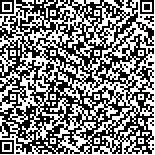| 本文已被:浏览次 下载次 |

码上扫一扫! |
|
|
|
| Numerical simulation of influence of crack fillers on stress disturbance effect during pulsating hydro-fracturing |
|
LU Peiqing, LI Gensheng, SHEN Zhonghou, HUANG Zhongwei, SHENG Mao, CHI Huanpeng
|
|
(State Key Laboratory of Petroleum Resources and Prospecting in China University of Petroleum, Beijing 102249, China)
|
| Abstract: |
| A linear slip deformation model, a finite-difference method and staggered-grid were used to investigate the stress propagation and distribution in fractured formation during the pulsating hydro-fracturing (PHF) process, and the influence of crack fillers was analyzed at different crack intervals and source frequencies. The numerical simulation results show that the influence of mineral-filled cracks on PHF stress disturbance is weak, so that its fractured zone can be considered as homogeneous. When the crack is filled with fluid, it can cause the reflection of pressure waves, which will form a great velocity contrast between strong and weak reflection zones to generate shear stress, then causing tensile damages. However, if the crack is too close to the pulsating source, the reflected and propagated pressure waves will disturb each other and reduce the fracturing effect. The influence of gas-filled cracks is similar to that of the fluid-filled, but its reflection of pressure waves is much stronger, which means a longer crack interval can be applied to promote the stress disturbance effect. The PHF technique can be used in coal seams with fracture anisotropy to increase their permeability. When the interval between initial artificial fractures and natural fractures is 2-3 times larger than the length of initial artificial fractures, a better PHF stress disturbance effect can be acquired. |
| Key words: pulsating hydro-fracturing linear slip deformation model crack fillers stress disturbance effect optimal interval |
|
|